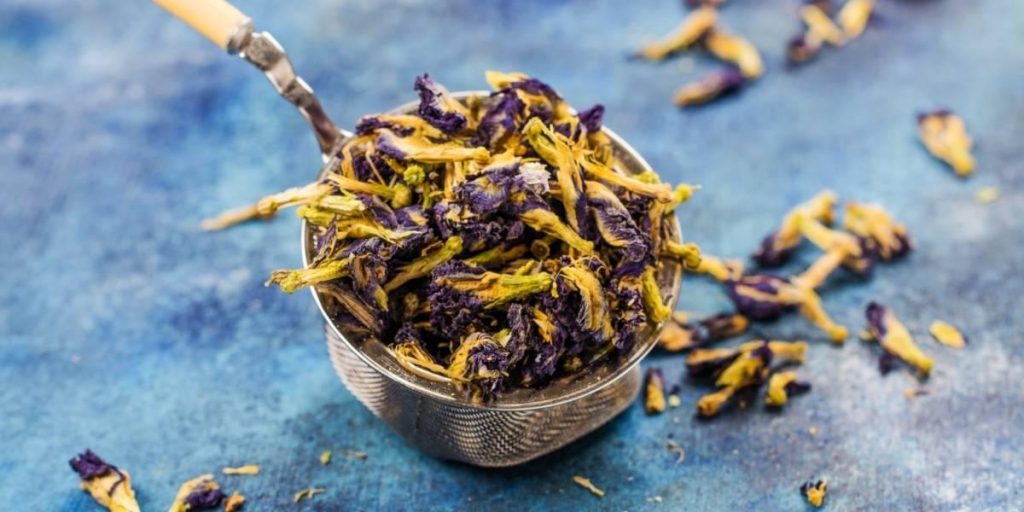TTB Classification: What is Pea Flower?

Sometimes things just come together. There’s been a good bit of discussion on using Clitoria ternatea, AKA the butterfly pea plant in spirit production here in the US. Mostly the discussion has been griping and a little bit of jealousy since distilleries in Canada and other countries can use it to give their spirits a wonderful blue color while the FDA and TTB kept dragging their feet and not approving butterfly pea flower for use in spirit recipes.
What Pea Flower Does to Spirits
This might not sting so much if it weren’t for the fact that spirits with butterfly pea flower used as an ingredient could be imported into the US but not produced in the US. That all changed with the announcement that the FDA approval of the water-based solution using butterfly pea flower as a coloring additive went into effect on October 5th.
There isn’t much information that I can find past 2018 on the TTB’s guidance at the time of writing this article but with FDA approval it should be an allowed ingredient relatively soon, if not already. The FDA recognizes the aqueous solution of butterfly pea flower as generally safe so there shouldn’t be much pushback from the TTB.
This is great news for anyone looking for a natural food grade way to get a blue or purple color. There are not a lot of naturally occurring alternatives for a blue food coloring in higher heat and/or watery applications like beverages that offer long-term stability. The other naturally occurring blue colorant approved by the FDA, Blue spirulina, can’t take the heat the same way that the pea flower extract can.
Why Do Spirits with Pea Plant Turn Blue?
For the chemistry nerds, this shade comes over as more of a Blue #2 color than Blue #1 at 3.8 pH but the pea flower extract changes color with pH. At lower pH it produces more of a purple color but since ethanol and water have a more neutral pH of around 7 you’d really need to up the acid to get the purple to pop.
There are a lot of different recipes you could build with pea flowers and we have a very good botanical and seasonal gin-making article to get your creative juices flowing. There’s no reason to stop at gin either, the FDA approved the use of butterfly pea flower for 15 other beverages in addition to the catch-all “alcoholic beverages category” so there are many different applications where this wonderful blue product can be used now.
One of the potential reasons that such a cool additive took so long to be approved was likely because there wasn’t a lot of safety data specifically for this product. The butterfly pea flower tea has been available on the market for a while now but because of the way supplements are regulated by the FDA compared to the food ingredients there can be a lag between generally recognized as safe and proven to be safe for use.
The flowers of the butterfly pea plant have been used in teas and medicinally for centuries and are not toxic but other parts of the plant may be and have not been approved for use. There is some inconclusive evidence that butterfly pea flower tea may cause complications in pregnancy but so does alcohol so if you may be pregnant it may be best to avoid blue gins altogether.
When Will Pea Flower Get Approved?
Butterfly pea flower has had a long road to FDA approval but it’s finally happened and now there’s another wonderful tool added to the spirit maker’s toolbox. With its unique and stable color and dynamic color-changing response to pH, it is yet another ingredient to add to your mix to separate your product from the rest of the pack.
We’d love to hear about any of your experiences with using butterfly pea flower and how you’re integrating it into your products now that it’s approved and you can start tinkering with it legally. Leave us a comment below or give us a call!